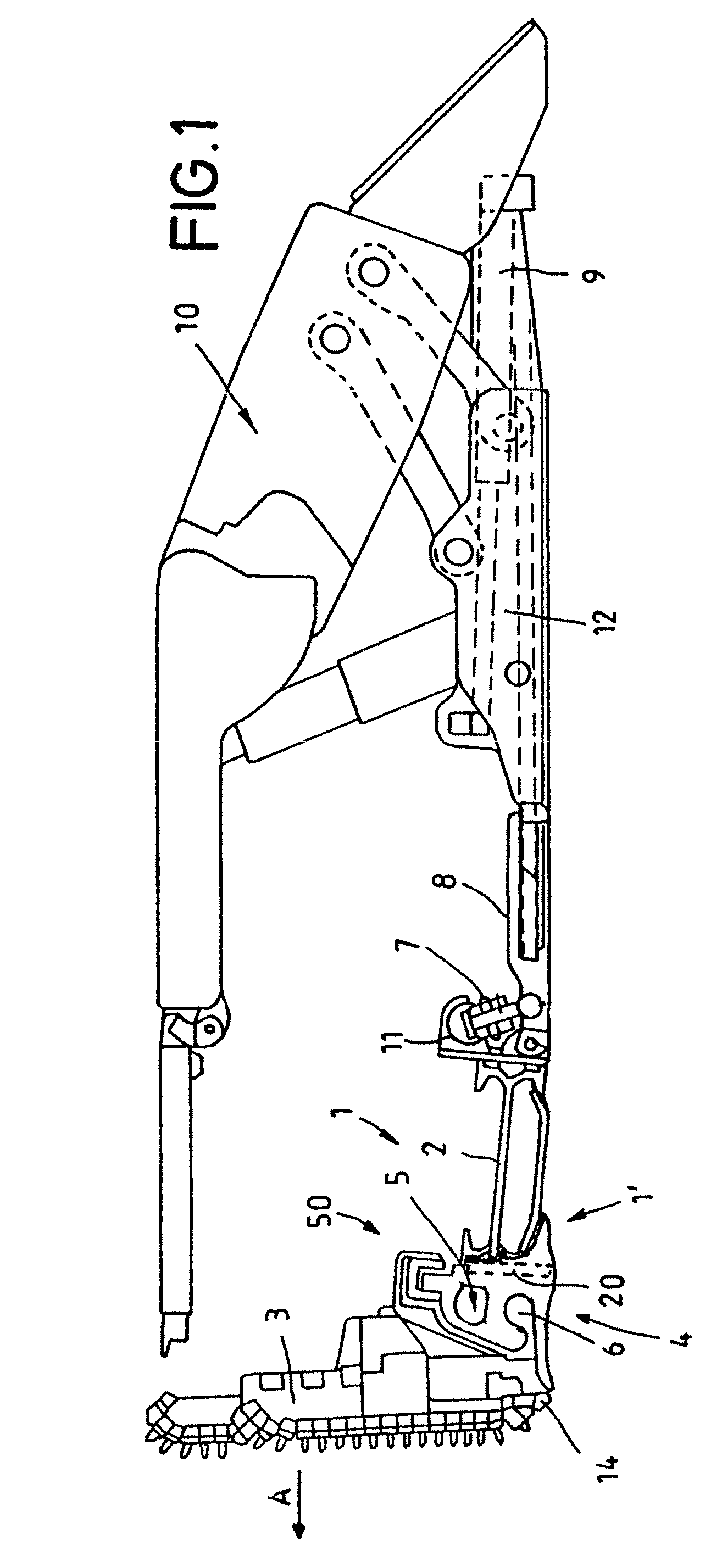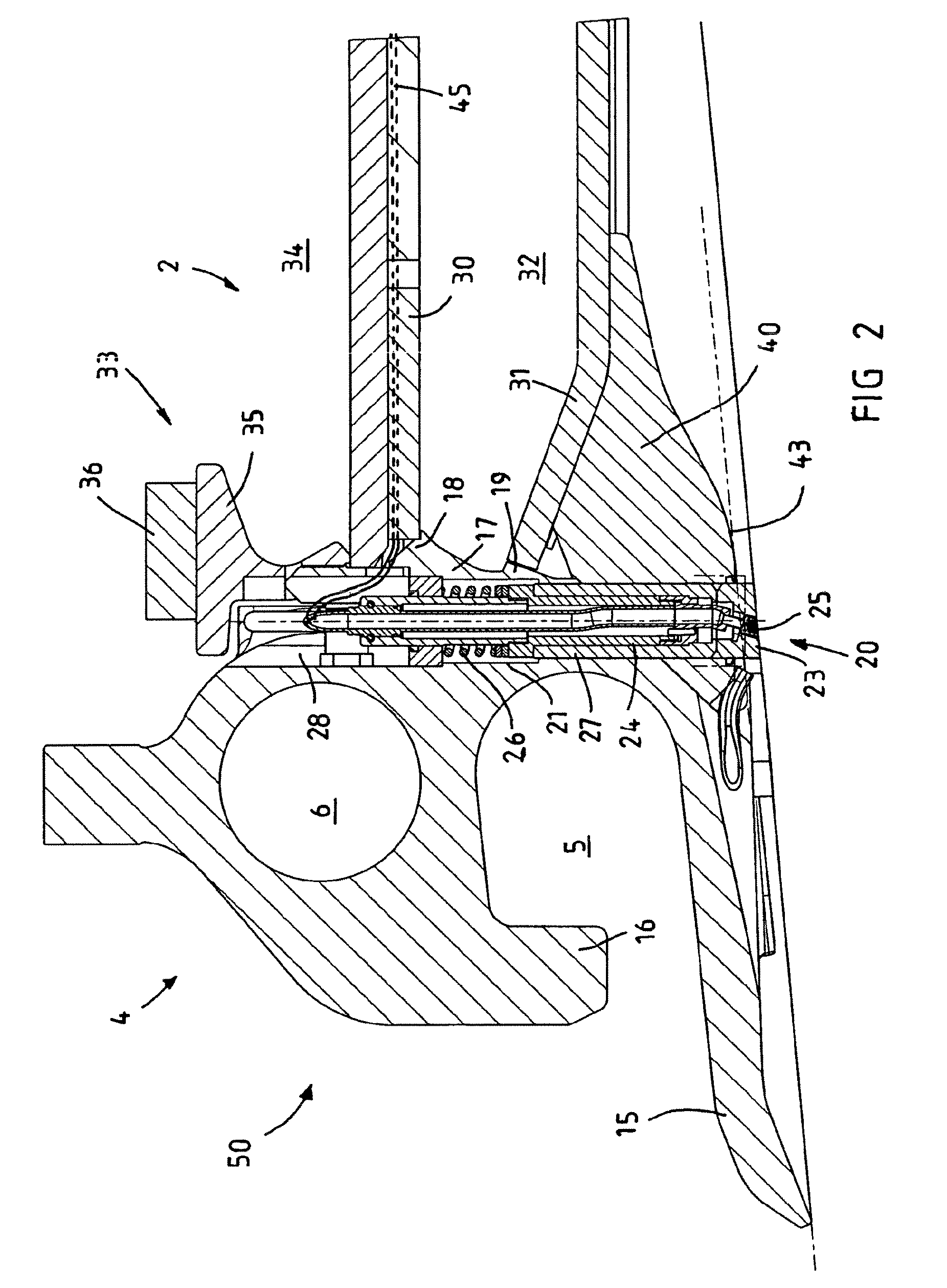Device for determining the cutting horizon of a mining extraction system, and pan element therefor
a technology of mining extraction system and cutting horizon, which is applied in the direction of open-pit mining, earth drilling and mining, slitting machines, etc., can solve the problems of small installation space, different loadings for different planing directions, and low service life of optical detection sensors, so as to reduce susceptibility to wear and increase operation reliability.
- Summary
- Abstract
- Description
- Claims
- Application Information
AI Technical Summary
Benefits of technology
Problems solved by technology
Method used
Image
Examples
Embodiment Construction
[0021]Referring now to the drawings wherein the showings are for the purpose of illustrating exemplary embodiments of the invention only and not for the purpose of limiting same, the plough system, which is shown diagrammatically in FIG. 1 and the basic design of which is known, comprises a face conveyor 1 which is laid in front of a coal face (not shown) and can be moved in the working direction, in the form of an armored flexible conveyor, of which only one pan element 1′ is shown in FIG. 1. A coal plough 3 which loads the coal which is extracted at the working face in a stripping manner into the face conveyor 1 is guided on the conveyor 1 as winning machine. The correspondingly extracted coal can be conveyed away from the winning operation by way of the face conveyor 1. The coal plough 3 is guided positively on a plough guide or machine guide which is installed as guide section 4 on the working face side in each case on the pan 2 of each pan element 1′ of the face conveyor 1. The...
PUM
 Login to View More
Login to View More Abstract
Description
Claims
Application Information
 Login to View More
Login to View More - R&D
- Intellectual Property
- Life Sciences
- Materials
- Tech Scout
- Unparalleled Data Quality
- Higher Quality Content
- 60% Fewer Hallucinations
Browse by: Latest US Patents, China's latest patents, Technical Efficacy Thesaurus, Application Domain, Technology Topic, Popular Technical Reports.
© 2025 PatSnap. All rights reserved.Legal|Privacy policy|Modern Slavery Act Transparency Statement|Sitemap|About US| Contact US: help@patsnap.com



